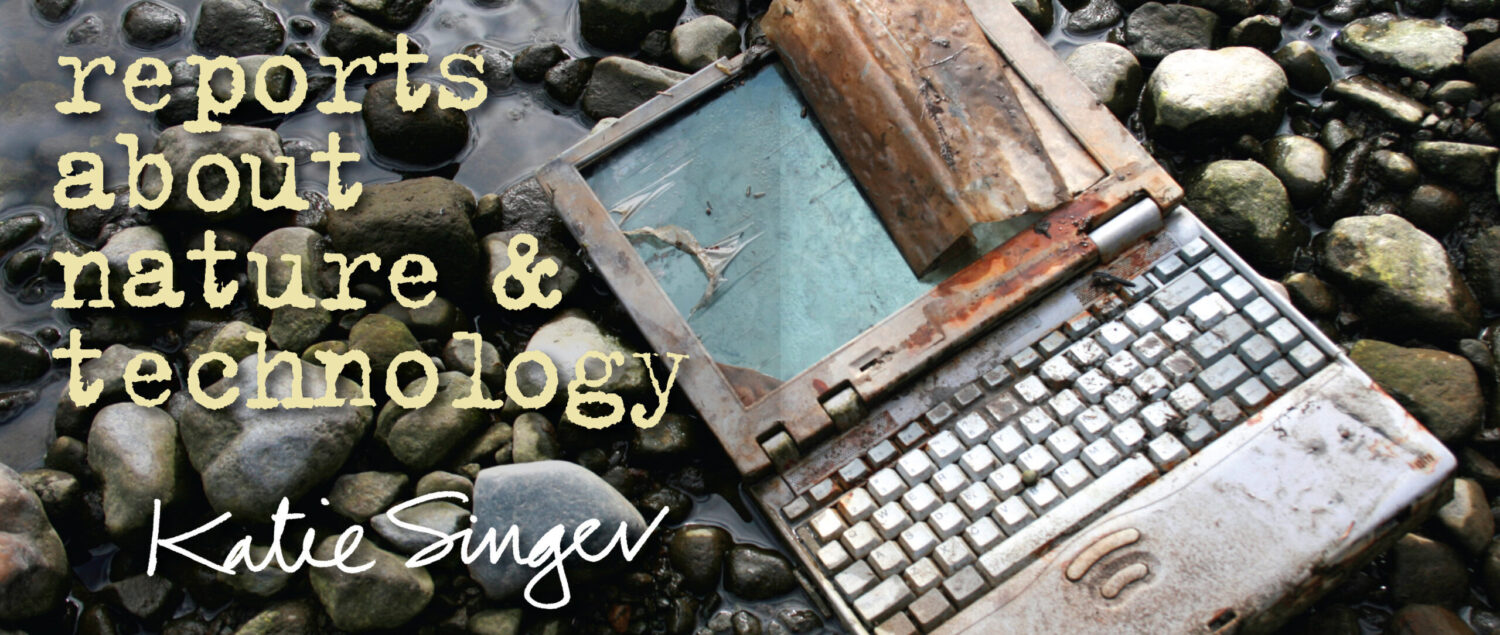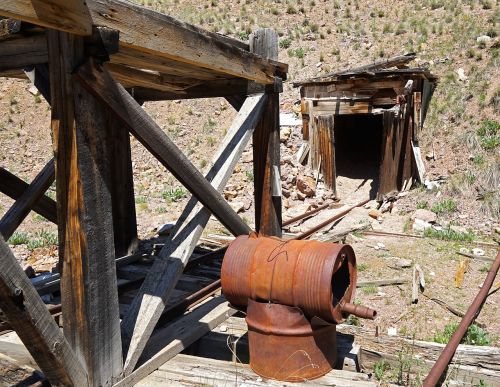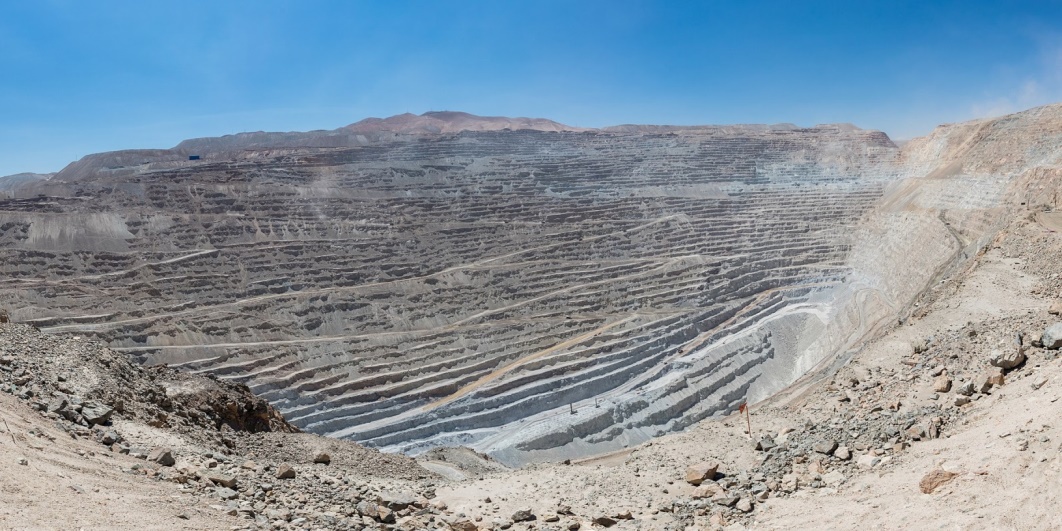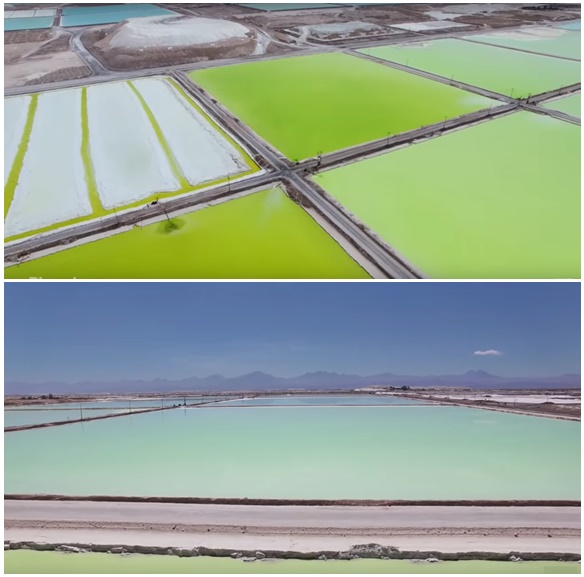Mining the sacred: questions for a sustainable relationship with the Earth
by Katie Singer and Aaron French
In order to produce and preserve food, deliver electricity, manufacture and operate computers, access networks, data centers, “renewable” solar and wind systems, motorized vehicles (including tractors and electric vehicles) and so much more, our society depends on extracted ores and fossil fuels. Manufacturing one smartphone requires hundreds of substances, including copper, gold, silver, cerium, cobalt, coltan, lithium, quartz, petroleum coke and tin.1 We consumers rarely see industrial-scale, corporate extraction or smelting. We rarely know about the energy and water they consume, the greenhouse gases and toxins they emit, the worker hazards or wildlife habitat losses that occur during routine extractions and processing.
And yet, the impacts of mining are steep. For every single ton of metal extracted, 426 tons of waste arise.2 More people have been murdered over mining for coltan than any other single event since World War II.3 (Refined to a powder, coltan holds charge in mobile devices.) Producing one ton of lithium (used in batteries for mobile devices and e-vehicles) requires 500,000 gallons of water, often taken from farmers.4
In ancient times, many people believed that spirits ruled the underground, a sacred realm. They saw the Earth as feminine and called her “Mother Earth” or Terra Mater.5 They believed that metals, stones, elements and even tools were “conceived” by polarized male and female energetic flows. Ores grew deep in the Earth over time, like fetuses. Miners entered mineshafts—birth canals and sacred wombs—with reverence. They believed that without reverence, engaging the underworld would be dangerous and blasphemous.
Discovering and extracting ores meant “meddling with the natural order of things ruled by some higher law, and intervening in a secret and sacred process.”6 Indeed, while earlier people recognized the benefits of mining, smelting, tool-making and commerce, they also perceived that extracting and transforming ores into usable metals and gems aroused evil.7 They believed that technology brought about as much destruction as cultural progress.
Sacred union with the Earth
In earlier eras, in places like Malaysia and Africa, local priests oversaw the digging of new mines. These tribal leaders recognized the Earth as a living being whose minerals and metals revealed themselves only with proper blessings. Before digging, miners prayed and evoked the mine’s ancestors.8 Before entering a mine, to protect themselves from the underground’s dangers, miners needed inner purity. They fasted, meditated and prayed.
Before smelting—burning a furnace to reduce a metal from ore—workers observed strict sexual abstinence. They considered smelting a sacred sexual marriage of ‘male’ and ‘female’ ores. To ensure the magical union’s success, workmen needed to reserve their sexual energy.9
Today, in Peru, traditional, small-scale miners give offerings to patron statues to appease Supay, Lord of the Underworld, and a race of demons.10 Bolivian tin miners make offerings to a devil-like creature they call tío, whom they believe owns the minerals and metals.11
In Obuasi, a Ghanaian gold-mining town, many believe that gold possesses spiritual energy, and that it serves as a conduit for higher spiritual beings. To revere the mine’s deities and riches, tribe members carry out complex ceremonies. They believe that deities manifest gold only in response to proper, unselfish rituals.
Forcing the Earth to surrender
Aristotle claimed that the Earth formed minerals and metals by its inhalations and exhalations. Early modern scientists—self-declared “priests of nature” like Francis Bacon—inverted Aristotle’s paradigm. They redefined Mother Earth as a secretive woman who hid her knowledge and wealth. Bacon, a shareholder in a European mining company, helped patent new mining techniques.12 He advocated for “contained, controlled” methods that force the Earth to reveal her mysteries and surrender her sacred resources.13
Carolyn Merchant called this inversion “the death of nature,” wherein modern science and technology turn the Earth into a warehouse of dead, exploitable commodities. This change made nature, ores and fossil fuels into raw materials to be dominated, dismantled and mastered.14 It freed people to extract ores without constraints.
Others might call industrial-scale extractions for instant communication and access to international data…a Faustian bargain.
Mining for profit
Conflicts over traditional, small-scale, sacred mining and large-scale operations conducted by transnational corporations have grown increasingly violent.15 As Lauren Coyle Rosen explains, “lower forms of spirits…may respond with gold to unethical rituals performed by those seeking wealth. Any such gains tend to dissipate in short order, however, as they are derived through injustice and falsehood.”16
As demand for electronics (including smartphones, solar and wind systems and e-vehicles) grows, so does demand for the ores they require. Terrestrial supplies have become harder and less profitable to extract. Some claim that mining the ocean floor for cobalt, nickel, copper, manganese and other elements used in electronics would be “cleaner.” But deep-sea mining would disrupt ocean ecosystems that have evolved over millions of years.17
Yet others aim to explore the moon’s surface for silicon, iron, magnesium, aluminium, manganese and titanium, opening “unlimited possibilities for the penetration of mankind into the Universe.”18
Restoring respect for the Earth
Decades ago, the ecological economist Herman Daly suggested, “Do not take from the Earth faster than it can replenish. Do not waste faster than the Earth can absorb the waste.”
Given that we have not heeded this warning, how/can we restore respectful relationship with the Earth, a sentient being on whose sacred body our lives depend?
To begin, let’s learn what’s behind our screens. Let’s live with questions about reducing our consumption of ores, energy and water. Let’s question definitions of sustainability—is it to maintain our lifestyles, as marketers would have it? What would sustainability look like if it respects the living Earth?
To reduce consumption, to reduce engaging the global super-factory, be aware that anything manufactured embodies extractions. Wait at least four years before upgrading equipment. Visit www.ifixit.com for free repair manuals for any device.
Track and evaluate the amount of time you spend online in one day. Compare it to time spent without an electronic interface.
Name five things you’d love to do on a screen-time Sabbath—and then enjoy a day without computers.19 Try that weekly.
Trace the supply chain of one substance in your computer—and share your research with neighbors, classmates and coworkers. Cultural change happens in groups of seven. For a list of one smartphone’s 1000-plus substances, visit www.OurWeb.tech/campaign.
- Needhidasan, S., et al., “Electronic waste–an emerging threat to the environment of urban India,” J. Env. Health Sci. Eng., 2014.
- Keeling, Arn, “Mineral Waste,” Sage Encycl. of Consumption and Waste, eds. C. Zimring and W. Rathje, 2012.
- Eichstadt, Peter, Consuming the Congo: War and Conflict Minerals in the World’s Deadliest Place, Lawrence Hill Books, 2011.
- Katwala, Ami, “The spiraling environmental cost of our lithium battery addiction,” Wired, 8.5.18.
- Eliade, Mircea, The Forge and the Crucible, U. of Chicago Press, 1978.
- Eliade, p. 56.
- McDermott, Emily, “The Metal Face of the Age: Hesiod, Virgil, and the Iron Age on Cold Mountain,” Int’l. J. of the Classical Tradition 17, no. 2 (2010).
- Eliade, p. 54-56.
- Eliade, p. 60.
- Carreño, Guillermo S., “Mining and the Living Materiality of Mountains in Andean Societies,” J. of Material Culture 22, no. 2 (2017). See also Marisol de la Cadena, Earth Beings: Ecologies of Practice Across Andean Worlds, Duke U. Press, 2015.
- Nash, June, We Eat the Mines and the Mines Eat Us: Dependency and Exploitation in Bolivian Tin Mines, Columbia U. Press, 1979. Taussig, Michael, The Devil and Commodity Fetishism in So. America, U. of N. Carolina Press, 1980.
- Pastorino, Cesare, “The Mine and the Furnace: Francis Bacon, Thomas Russell, and Early Stuart Mining Culture,” Early Science and Medicine 14, no. 5, 2009.
- Merchant, Carolyn, “Mining the Earth’s Womb,” in Machina Ex Dea: Feminist Perspectives on Technology, ed. Joan Rothschild, Pergamon Press, 1983. Merchant, Carolyn, The Death of Nature: Women, Ecology, and the Scientific Revolution, Harper & Row, 1980.
- Merchant, “Mining the Earth’s Womb.”
- Coyle Rosen, Lauren, Fires of Gold: Law, Spirit, and Sacrificial Labor in Ghana, U. of Calif. Press, 2020.
- ibid.
- Aldred, Jessica, “Explainer: Deep-sea mining,” China Dialogue, 11.23.21. https://chinadialogueocean.net/6677-deep-seabed-mining/
- Ursul, Arkadiy and Tatiana Ursul, “From Planetary to Space Mining: Prospects for Sustainable Development,” MATEC Web Conference 265 (2019).
- Graber, Diana, Raising Humans in a Digital World: Helping Kids Build a Healthy Relationship with Technology, HarperCollins, 2019. www.cybercivics.com
Katie Singer writes about the energy, extractions, toxic waste and greenhouse gases involved in manufacturing computers, telecom infrastructure, electric vehicles and other electronic technologies. She believes that if she’s not aware that she’s part of the problem, then she can’t be part of the solution. She dreams that every smartphone user learns about the supply chain of one substance (of 1000+) in a smartphone. Her most recent book is An Electronic Silent Spring. She currently writes about nature, democracy and technology for Meer.com. Visit www.OurWeb.tech and www.ElectronicSilentSpring.com.
AARON FRENCH, PhD., is a lecturer in Religious Studies. His research explores the intersection of science, religion and technology. He lives in Germany, where he creates sacred spaces.



